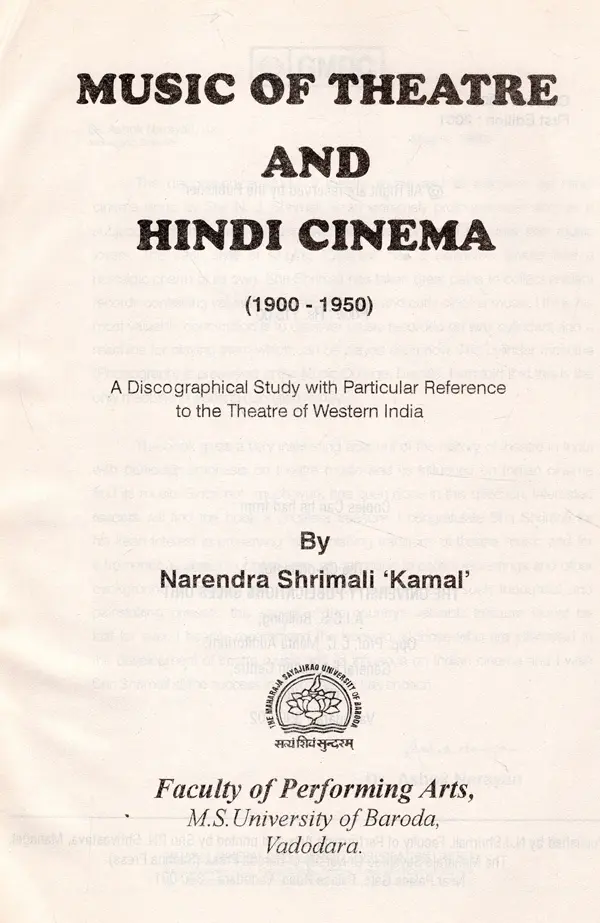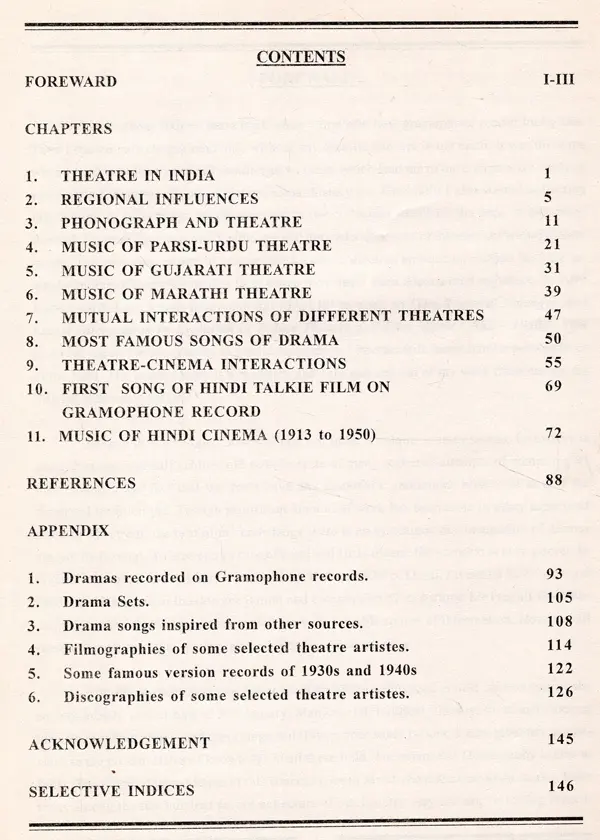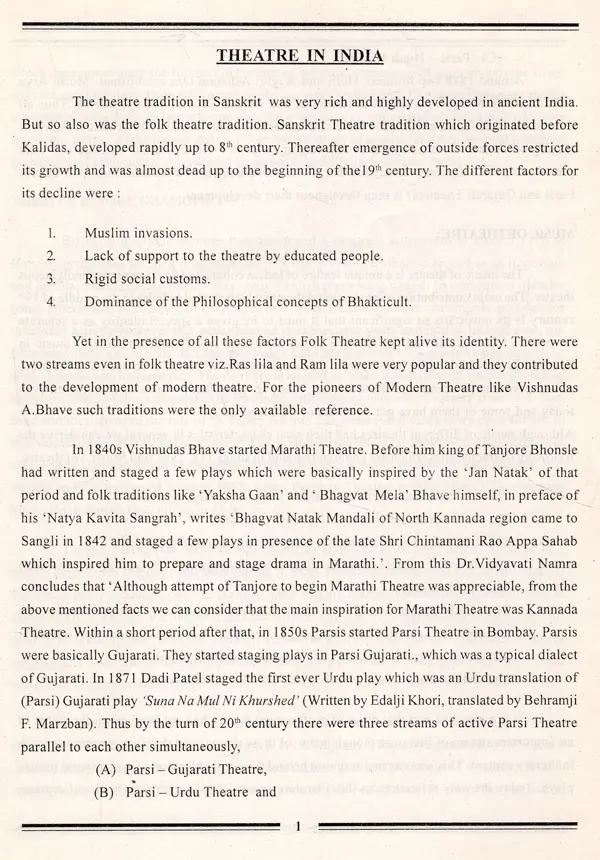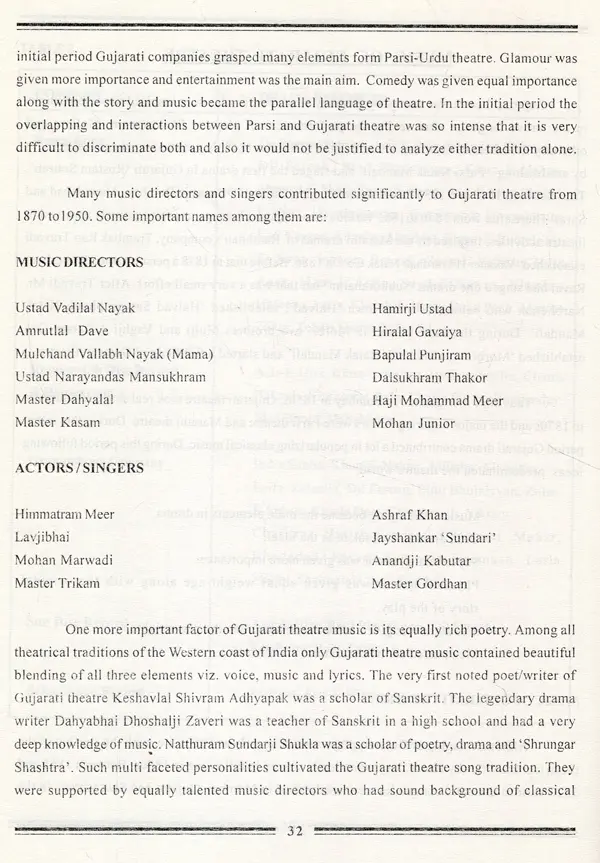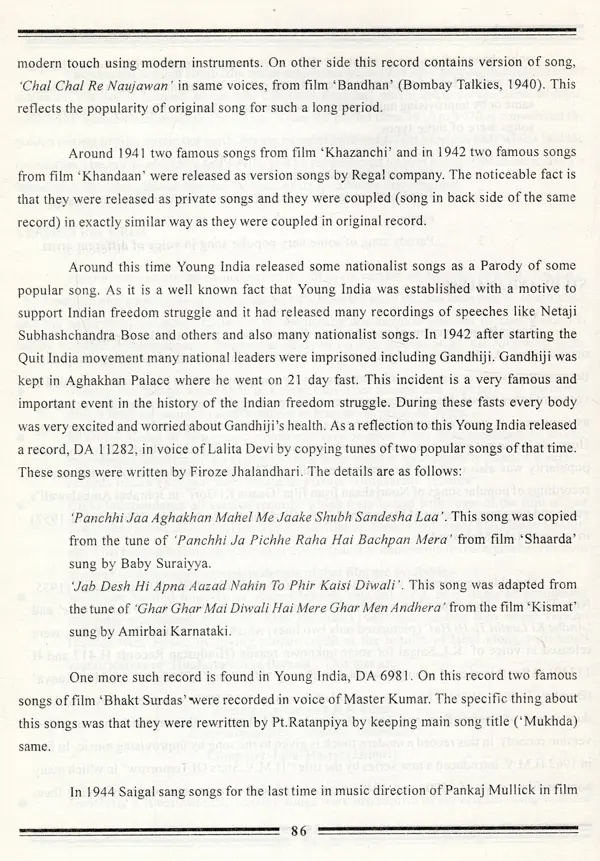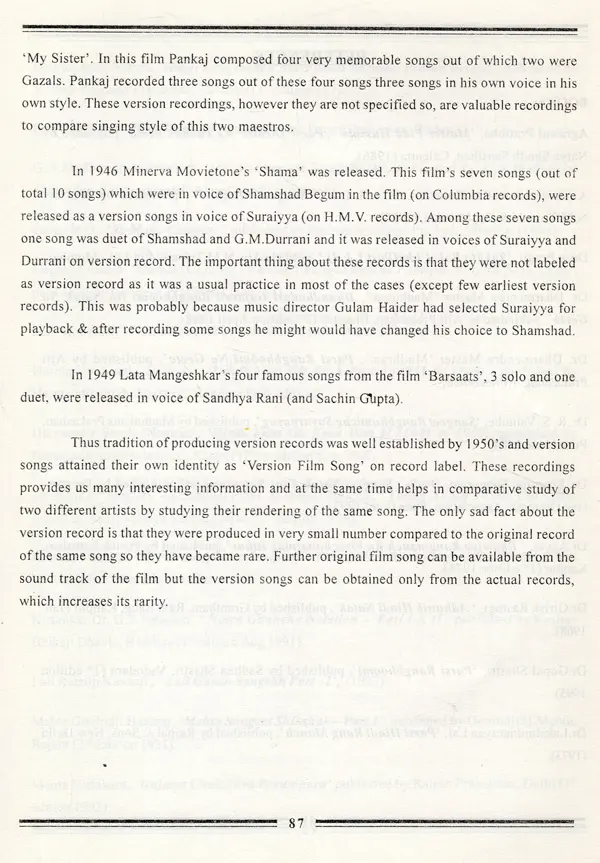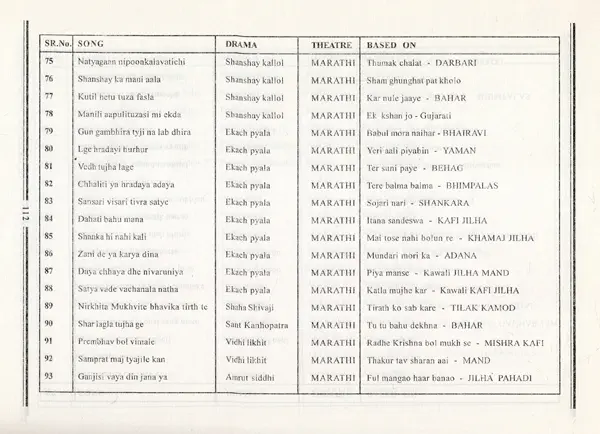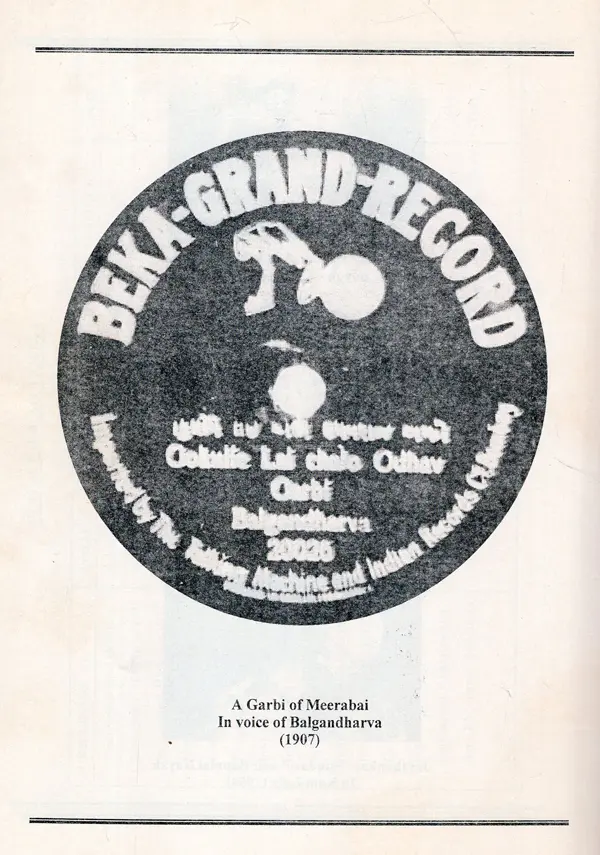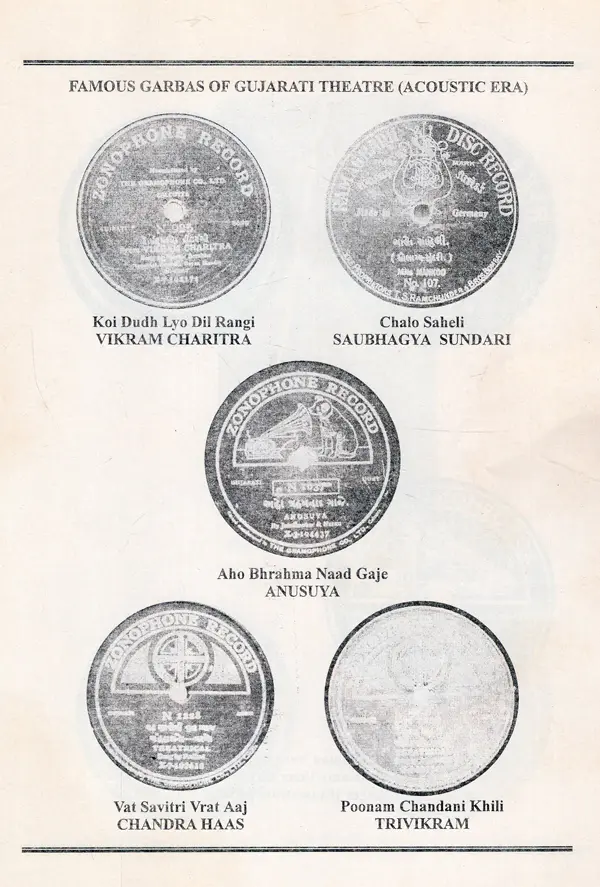
Music of Theatre and Hindi Cinema (1900-1950) (A Disco Study with Particular Reference to the Theatre of Western India) (An Old and Rare Book)
Book Specification
| Item Code: | UAY188 |
| Author: | Narendra Shrimali 'kamal' |
| Publisher: | The Maharaja Sayajirao University of Barodra |
| Language: | English |
| Edition: | 2001 |
| Pages: | 153 |
| Cover: | PAPERBACK |
| Other Details | 10.00 X 7.50 inch |
| Weight | 240 gm |
Book Description
Narendra Shrimali Kamal (b. 1969) is a scholar, archivist, discographer and a veritable encyclopaedia of Indian music on gramophone records. His study of the various genres of recorded music in India in the twentieth century is based on his exhaustive, and still expanding, personal collection of over 10,000 gramophone records, several hundred cassettes, spools, and many rare books.
The earliest record in his collection dates from 1902-one of the first such records cut in India and includes records of legendary singers like Miss Gauharjan of Calcutta, Rahimat Khan (aka Bhugandharv), Jankibai Chhappanchhuri", Pyaresaahab, Abdul Karim Khan, Faiyyaz Khan and of Instrumentalists of the caliber of Imdad Khan, Inayet Khan, Bundu Khan and Kumar Prabhatdevji among others. The collection also includes recordings of speeches of a range of world leaders Mahatma Gandhi, Sarojini Naidu, Subhas Chandra Bose, Jawaharlal Nehru, J.F.Kennedy, Sheikh Mujibur Rehman etc. His collection also includes sound recordings of Parsi, Urdu, Gujarati and Marathi theatre of last one century.
Narendra Shrimali is a civil engineer by training with a Master's degree in Design of Hydraulic Structures. He teaches Civil Engineering at the Maharaja Sayajirao University of Baroda. Besides presenting papers on Civil, Environmental and Hydraulic Engineering, Shrimali has conducted workshops on music and has given many talks and lecture-demonstrations on various aspects of music and culture through gramophone records. He has been felicitated by many organizations and his work has been profiled nationally and internationally in the print media as well as on radio and television.
Present book is an outcome of his hard work and continuous efforts, of last more than one and half decade, of studying and analyzing the theatre music on factual bases. It gives a very interesting account of the history of music of theatre of Western India and its influence on Hindi cinema and tries to trace its development pattern through Discographical analysis. This is a novel experiment and a first effort of its kind in India. There is no doubt that this book will fill the gap of whatever work is done on theatre and cinema so far and will give new dimensions to the theatre and cinema history.
It was about sixteen years back when I first saw how gramophone record looks like. Then I started collecting it randomly without any specific concept in my mind. It was this time when I tried to collect more information about them, which lead me to the comparative study of early period literature, political history, social history etc. Gradually I also started collecting information recordings, which were not in my collection to fill up the gaps in my study. Around this time I got interested in theatre and noticed a dark area of interesting field of theatre music. The unending efforts of concentrated study, collection and documentation lead me to- wards finding of many interesting facts which have never been documented anywhere. In 1999 I was awarded a research fellowship by 'MAJLIS to work on 'The Regional Lineages And Lineal Interactions In Evolution of Indian Theatre and Film Music (1902-1950)". This provided me ample opportunity to extend my study and interact with many scholar personalities of the field. The present book is a modified and enlarged version of my work done during the 'Majlis fellowship period.
Theatre that developed in western part of India is unique in many senses. Its history is more than one and half century old now. In spite of many scattered attempts of compiling its history it is a sad fact that we don't have any systematic continuous history of any of the theatrical tradition yet. Though significant amount of work has been done in many aspects of Marathi Theatre to the best of my knowledge there is no systematic documentation of dramas staged, their songs, artistes etc. In case of Parsi and Urdu theatre the scenario is even poorer. In Gujarati theatre, a few attempts were made by Mr.Ramniklal S. Desai, Jayantilal R. Trivedi and Madhukar Randeria in the documentation and compilation of its history. Mr.Pragaji Dosa has compiled many short biographies, which are very valuable source of information. However all these attempts are quite incomplete and therefore inconclusive.
Book's Contents and Sample Pages
